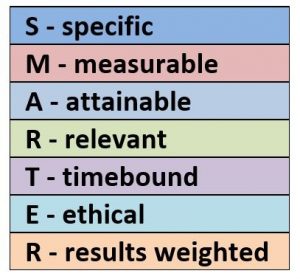Board Member Harassment – Indemnification and Insurance Will Not Protect You
I have a daughter, and as the father of a young girl, I naturally worry about her future. How I might protect her; help her develop skills; and prepare her for a successful and fulfilling career? When I think about these things, I worry about what she might endure along her journey and how can I protect her from negative experiences like bullying and harassment? The reality is that, unless the two of us are employed in the same company or she is sitting on the same Boards that I sit on, I will rarely be able to protect her once she is an adult in the professional world.
As a governance advisory professional, all Board actions must be aligned to the fiduciary duties of loyalty, prudence and impartiality and it should always be clear – harassment should never be present or overlooked in the workplace and the boardroom is no exception. Generally, to fulfill these duties, Board members need to adhere to their strategic oversight roles of:
- Establishing and maintaining a mission and vision;
- Establishing and maintaining effective policies and procedures; and
- Monitoring, identifying and mitigating risk.
With a heightened focus on anti-bullying campaigns and the global emergence of the Me-Too Movement, many leaders are challenged to ensure that everyone’s physical and emotional rights are both respected and protected. But what happens when this abuse happens in the boardroom or comes from a Board member? When you consider that most Board members have unfettered access to facilities and staff and are often expected to attend organizational and Board functions outside of their official meeting attendance, the risk of this happening becomes quite substantial.
Harassment is normally defined locally, varies by region, and is generically described by Wikipedia as:
“…a wide range of behaviors of an offensive nature. It is commonly understood as behavior that demeans, humiliates or embarrasses a person, and it is characteristically identified by its unlikelihood in terms of social and moral reasonableness. In the legal sense, these are behaviors that appear to be disturbing, upsetting or threatening.”
Board members should always know they are never protected if they break the law and the current multijurisdictional nature of organizations should make Board members overly sensitive about their actual and/or perceived conduct.
Current harassment laws in North America are rooted in the 1964 US Civil Rights Act and the 1984 Canadian Human Rights Act and depending on the location, the definition of harassment can be either narrowly or broadly defined and if a local definition is not set, then the default is to defer to a federal standard. Therefore, being familiar with only one local definition will not protect Board members whenever they are attending events or meetings in other regions or locations. Many Boards are comprised of members from a wide array of locations and sometimes follow a practice of rotating the location of their in-person meetings.
As well, it is generally understood that workplace harassment does not have to occur within an actual “place of work” and board members need to understand that they are also accountable for their actions when they are not officially in their organization or boardroom. This also applies to when they are:
- On travel status,
- At a conference where the attendance is sponsored by their organization,
- At sponsored training activities/sessions, and
- At formally sponsored and/or informal social events.
If a harassment charge is brought against a member, the location of the alleged activity will determine what legal definition is used, where the proceedings will take place, and if convicted, where that person may be incarcerated. In both Canada and the United States, the maximum penalty for an indictable harassment conviction is 10 years imprisonment and therefore should be taken very seriously by organisations and their Board members.
Complicating things even further, the broad scope of offensive behaviors and situations outlined in guidance tools produced by legal advisory groups provide lists that often includes:
- Specific criteria that is normally associated with the act of harassment;
- Actions that may be conceived as harassment; as well as
Actions that generally are viewed as harassment
In total, these lists typically encompass a large array of possibilities which increases the possibility of a Board member’s actions falling under these described actions or scenarios and if a Board member is formally charged for harassment, indemnify policies and Insurance will not protect them. Identification and Directors & Officers insurance are only in place to protect innocent Board members and therefore, once a charge is laid, the board member(s) is fully responsible for covering their legal fees and will be subjected to the full extent of the law and related convictions.
Most Board members don’t know what they don’t know.
Therefore, it is recommended that all Board members be educated on the laws and legal definitions that pertain to the regions that they will be in and that your Board establish a comprehensive code of conduct that is reviewed and signed by all your members.
Given the extensive list of possibilities, Board members need to be overly sensitive to all potential interpretations of their words and actions and in order to fulfill their fiduciary obligations and mitigate risk, Board members must always maintain their conduct at the highest standard possible. As a Board member you need to also understand that the potential repercussions to you and the organization that you are entrusted to oversee are serious.

